With my farthest photo travel since March a 58 mile jaunt to Ice Caves State Park and 59 miles to Whidbey Island, this year was about staying home. My odometer clocked 2,500 miles. I didn’t backpack due to knee issues, but paddling locally, I found fresh photo ops. Bird nest searches returned engaging photos as well.

Springtime
In the spring of 2020 I paddled my kayak frequently, always carrying a Sony A7 III, most often with a 100-400mm zoom. In the Sammamish Slough, I paused several times near a riverside salmonberry patch, where I frequently saw Marsh Wren and Common Yellowthroat. On this day the Salmonberry were blooming and I hoped to catch a singing male Yellowthroat amongst the blooms. After a long wait a female popped out, framed by pink flowers. I couldn’t have asked for more.
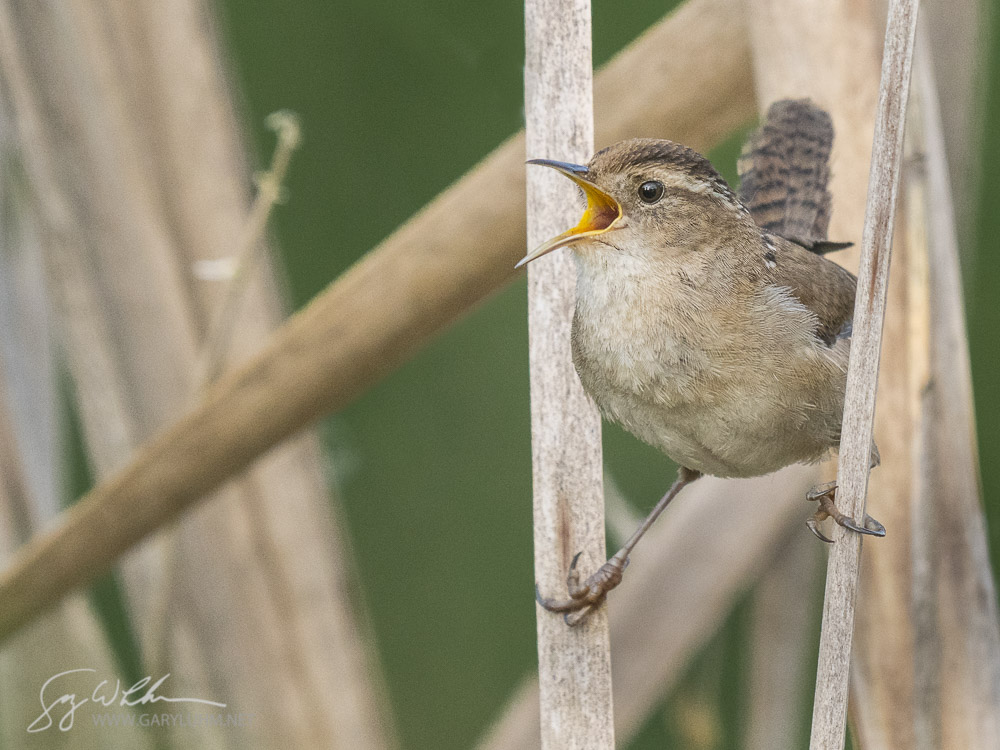
Diffuse light
Adjacent the slough Salmonberry patch but in last year’s decaying cattails, a male Marsh Wren was busy nest-building. Often he would pause and blast his euphonious song in all directions. I love this pose, Mr. Wren attached to vertical pillars, and the composition aided by cattail diagonals leading to his perch.
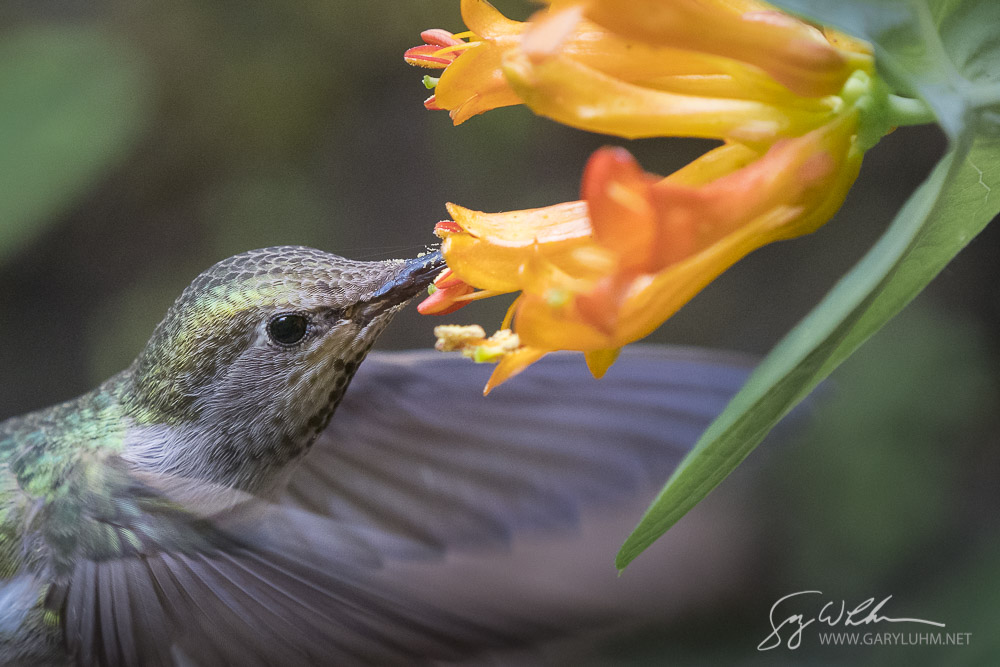
Co-evolution
I found three Orange Honeysuckle patches in area parks this year, and witnessed occasional, always female, Anna’s Hummingbirds gathering nectar. Often they fluttered, flower to flower, for what seemed like minutes before flying off. I doubt there were other serious pollinators. The long, trumpet-shaped Honeysuckle flowers match perfectly the hummer’s bill, tongue and hover.
I was sitting in the dirt, waiting for a bird to tap a particular flower, when this female dropped near to visit a ground-level flower. Oh, no, too close! But thanks to the close-focusing distance (3.2 ft) of my 100-400mm Sony, I leaned back a bit and got the shot. Moderate crop.
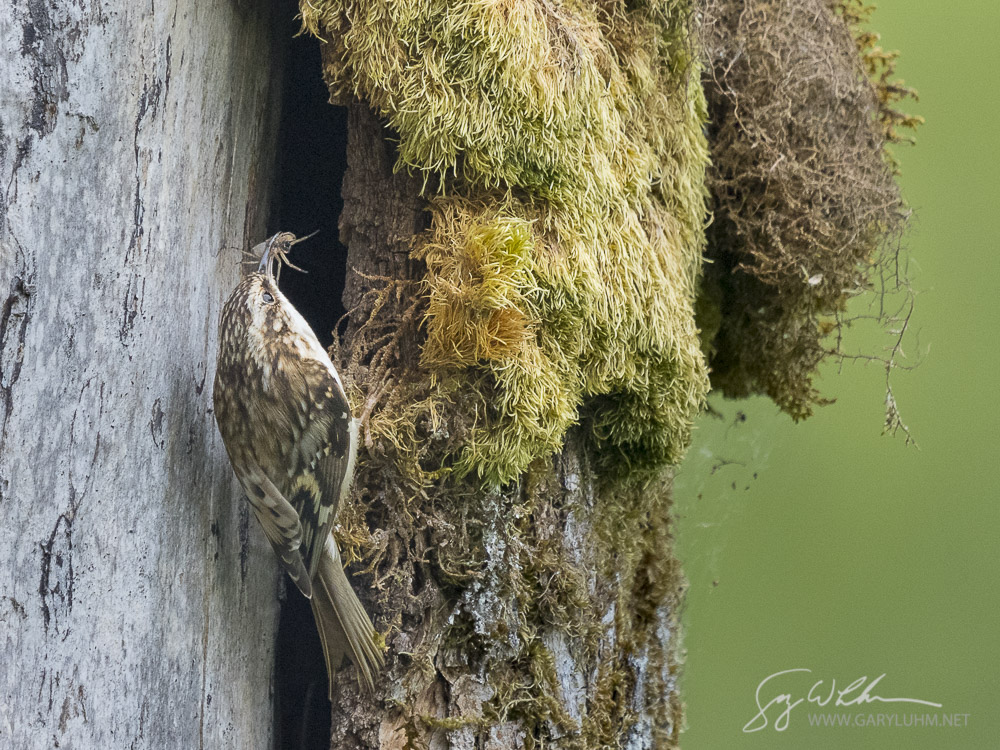
Bark Nest
At Stillwater, early April, I discovered a Brown Creeper nest when I followed one carrying nest material to where the bird disappeared behind tree bark. The site looked eminently photographable. My only concern, if the nest proved out, was if the parents would accept my presence; the shooting location wasn’t suitable for a blind. A month or so later the chicks had hatched, the parents brought in a smorgasbord of insects, and I found they tolerated a close approach. I shot eye level. Photographing a Creeper nest has been on my shot list for years, and this was a good one. Although I hoped to record the chicks poking their head out, or fledging, and I missed that, I was thrilled to achieve what I got.
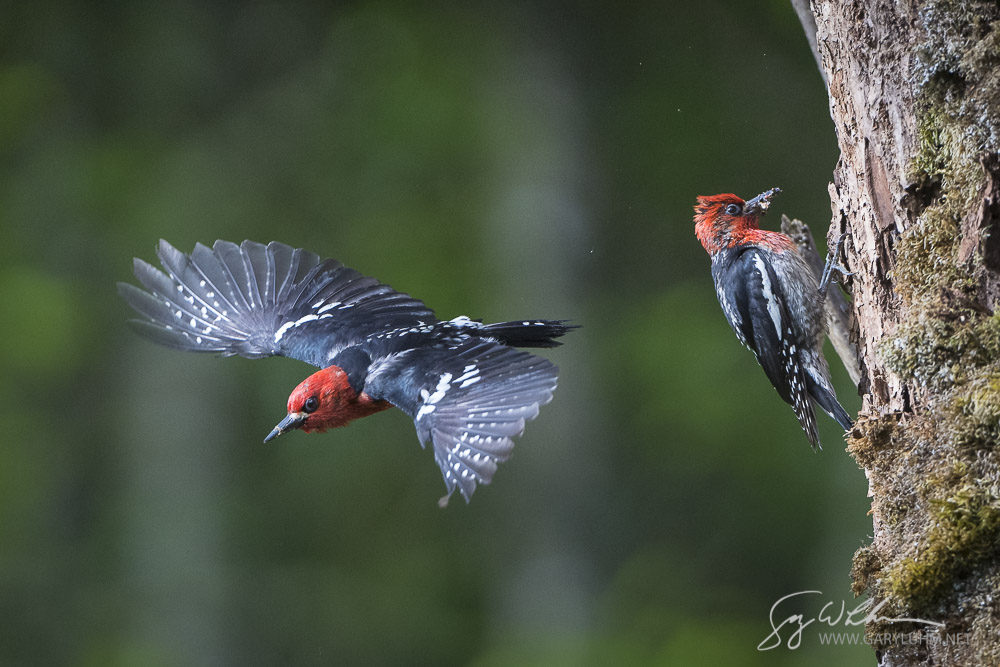
Sapsuckers
Rather late in the season, I found a pair of Red-breasted Sapsuckers boring out a nest hole at Stillwater. I think they abandoned a prior attempt, accounting for the delay. The nest was well lit, excellent for flight shooting, though several bothersome sticks behind the sight lines produced a busy background. I solved this problem by moving right, to the point I couldn’t see the entrance anymore, so focus was difficult. As always, however, I manually focused the lens, and in this shot, luckily got both adult birds with sharp eyes. Red on green!
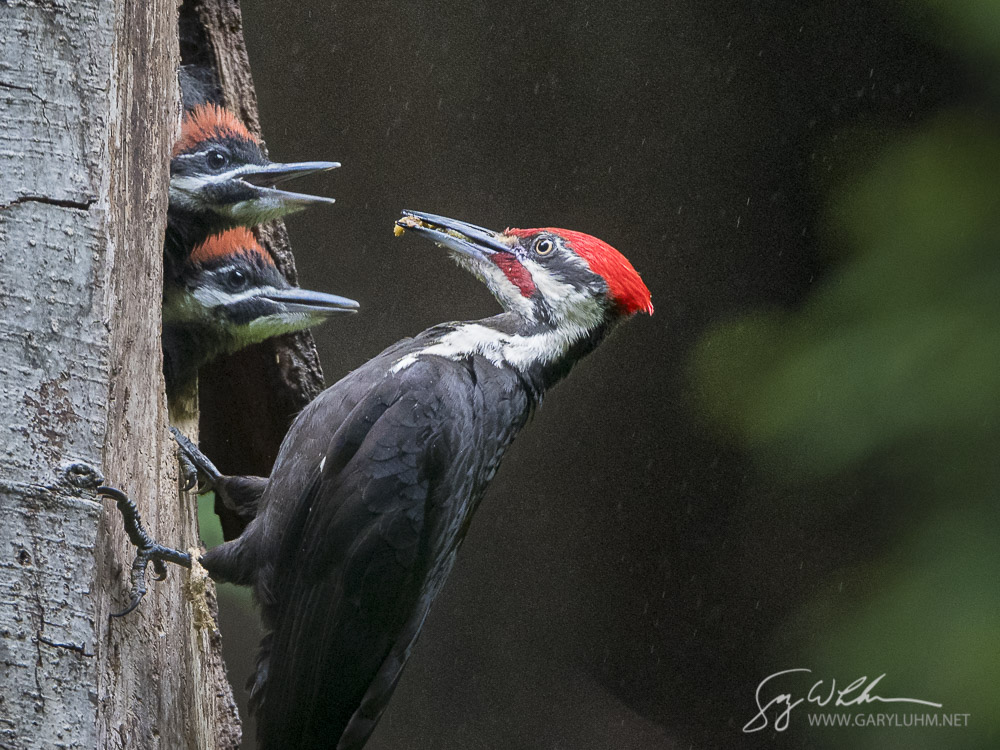
Light in the Forest (again!)
After going two years without photographing a Pileated nest, I discovered a fresh hole in an alder snag in a Seattle park. I checked back several times, never seeing any activity. Then one visit an adult female flew in, slipped inside, and emerged carrying poop. Bingo! Site lines to the nest were numerous along the forested trail, somewhat distant, but I was thrilled at the opportunity. This heavily-cropped image was shot during a misting drizzle, just days before the two females fledged.
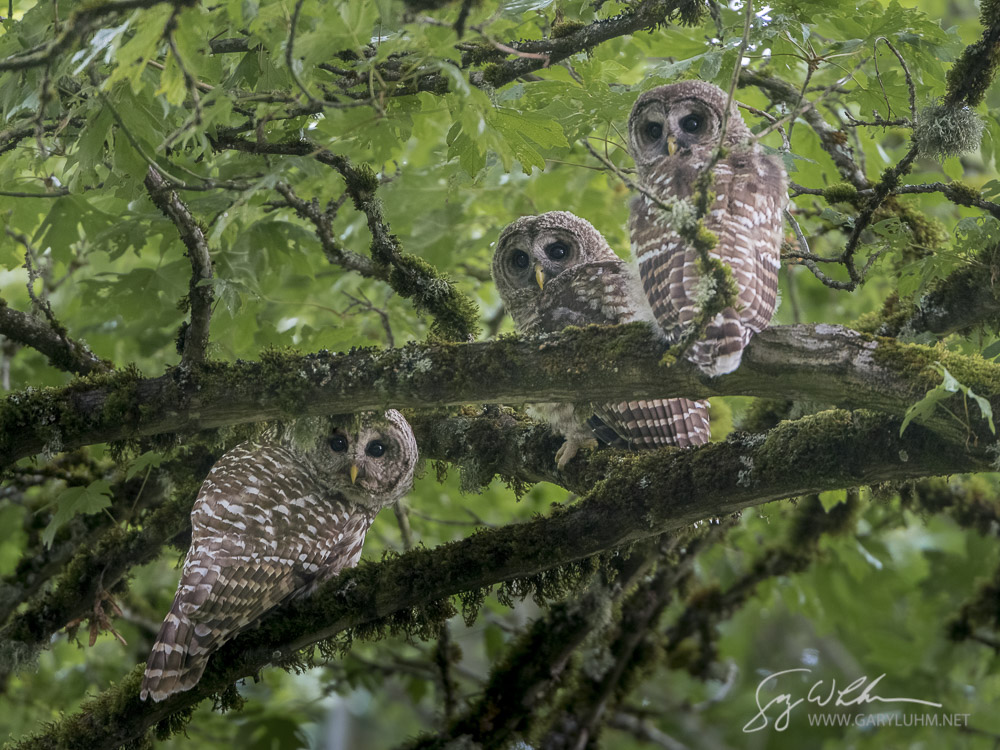
Barred Owls Three
I wandered in a Seattle park one morning and discovered a young Barred Owl, then two more, and then a fourth bird when an adult flew in. The best part was when the adult dropped down to the road to pick up a worm, returned to feed one of her young, and my camera video was filming so I captured the feeding. This still shot shows mom with two of the three owlets, almost full size but still retaining some downy feathers. I like the three birds together; the number three almost always enhances a shot. I like, as well, that each bird is just slightly hidden. I think it adds a bit of mystery to a most mysterious Strigiformes Order of birds.
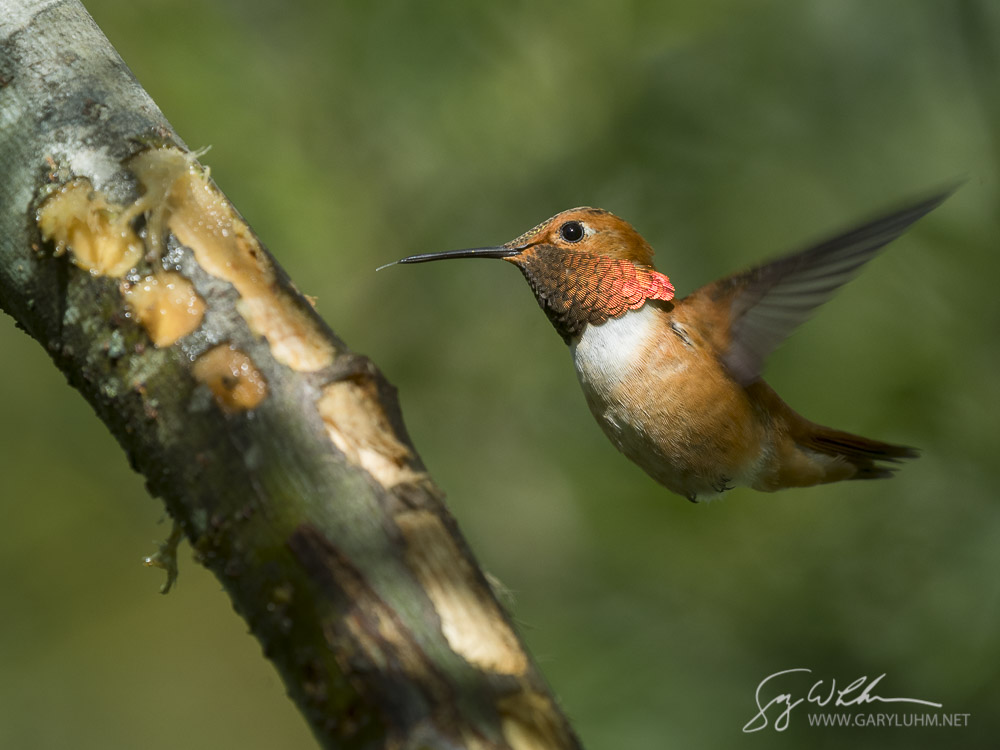
Big Four
I accompanied Kate on a bird survey at Ice Caves State Park, and while there discovered Rufous Hummingbirds defending patches of twin flowers and visiting sapsucker wells. I returned at dawn a few days later. The twin flowers were gone by and no longer defended, but one sap well was frequented by not just hummingbirds and red-breasted sapsuckers, but by waxwings, orioles and tanagers. I got the shot I was looking for when a male Rufous hovered next to the well.
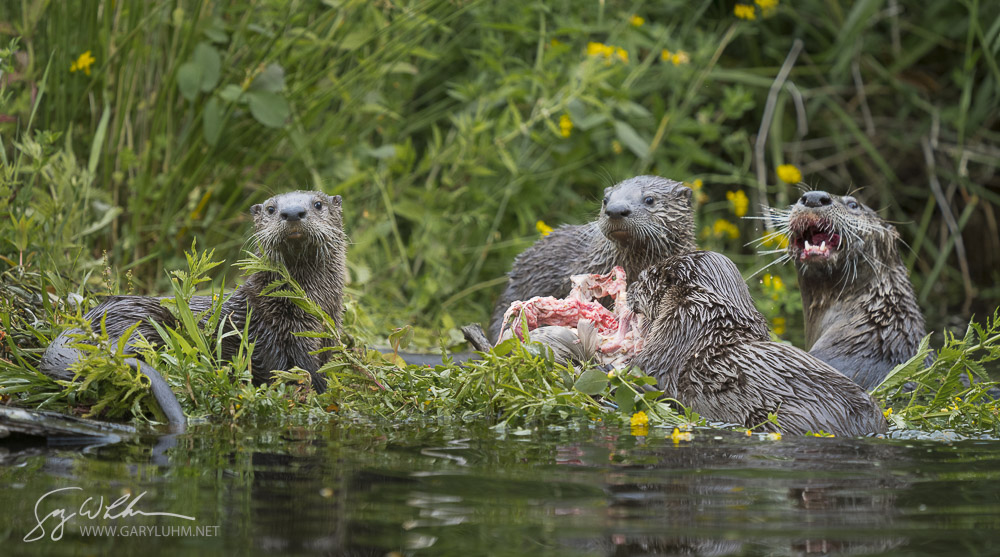
Goose Feast
Paddling my kayak solo in the Sammamish Slough became my routine coronavirus escape. One morning, I happened upon a baby river otter on the shore, alone, no mom in sight. But then upriver nearby, I discovered older siblings and mom devouring what turned out to be a Canada Goose carcass. I captured this image. As I drifted, I suddenly got their attention, and they all slid into the water. Then mom, in an afterthought, resurfaced and grabbed the goose, and it too vamoosed.
My hasty thought: river otters have learned how to hunt geese! What a plus, given the pest-level goose population that thrives here in this urban, park-poop ridden, predator-free environment. All summer I paddled hoping to find more otter-goose encounters, but never saw another sign. Oh, well. The vamoosed goose, it was too much to eat in one binge. I found it the next day, stowed underwater against a structure where the river current kept it expediently in place.
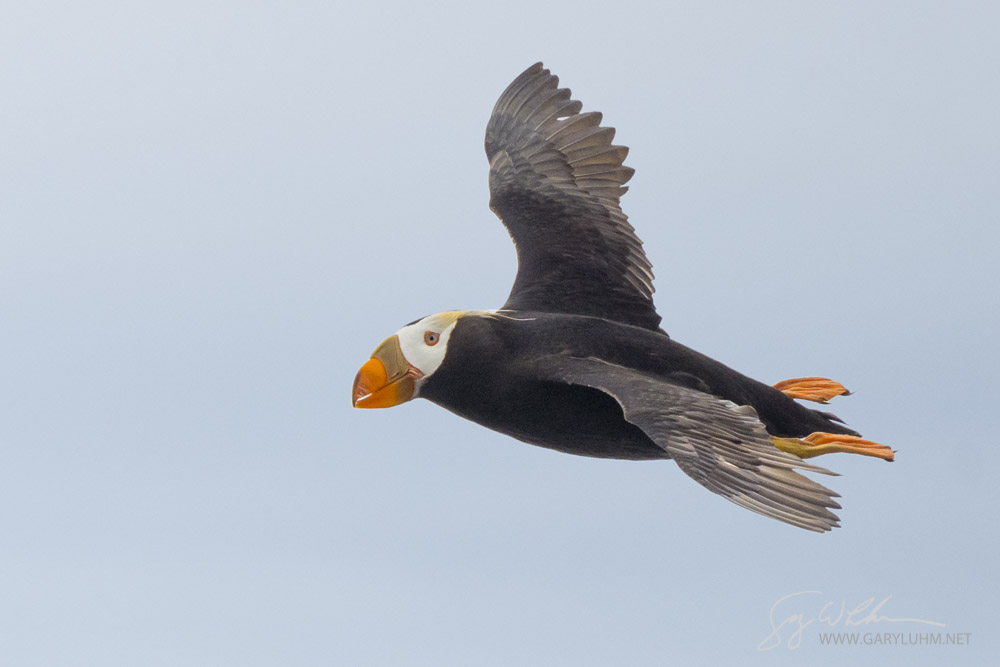
Smith Island
In July, I paddled to Smith Is, 5+ miles off Whidbey, to photograph Tufted Puffins. I found them on the far side of the island, and blogged about it here: “Smith Island Puffins” The experience was a highlight of the coronavirus summer, but also a photo bust when I blew a “coming-at-you” flight shot. The above image somewhat salvaged the trip, but disappointment lingers. Puffin flight shots by boat are a challenging target. I’ll say also I was well-prepared for the excursion, with rigorous 5-7 mile exercise paddles through the spring and summer, and years of safety and rescue practice with fellow paddlers and the Washington Kayak Club.
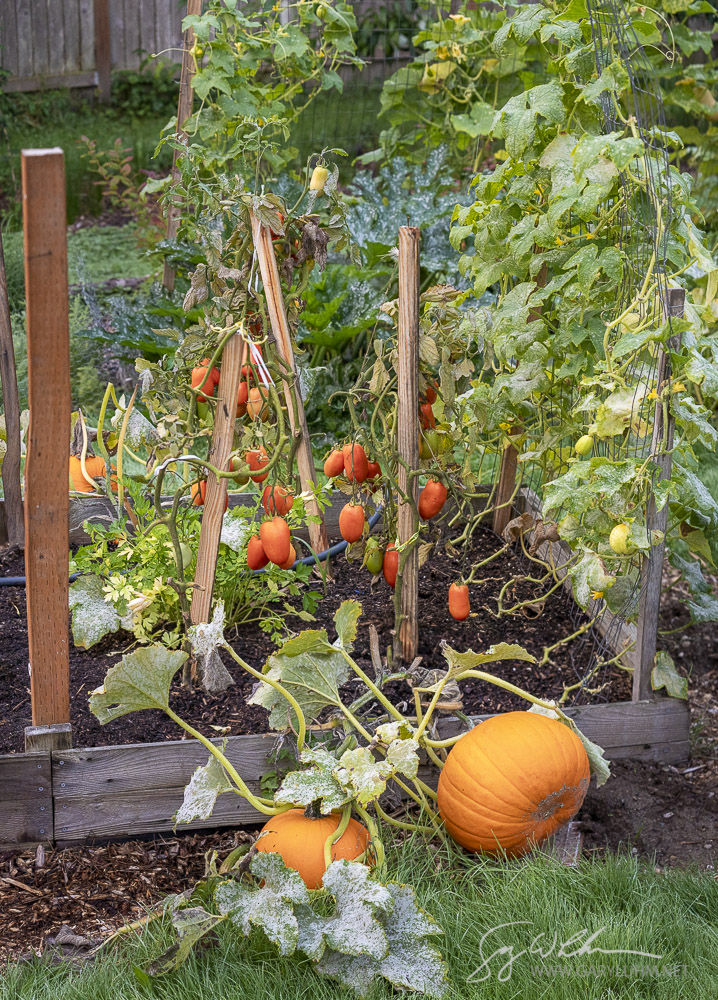
Garden Delights
Kate birded in earnest through the winter. Then coronavirus hit. She turned on a dime, and switched to working our garden, which produced copious peas, lemon cucumbers, zucchini, summer squash, cherry and roma tomatoes, and pie pumpkin. She also started a lot of asparagus, which probably won’t be harvestable for a couple years. I photographed the garden a few times, mostly documentation, but on a California-smoke September day, the sky painted the garden with an auburn glow, a perfect filter for pulling out the warm tones in Kate’s fruit.
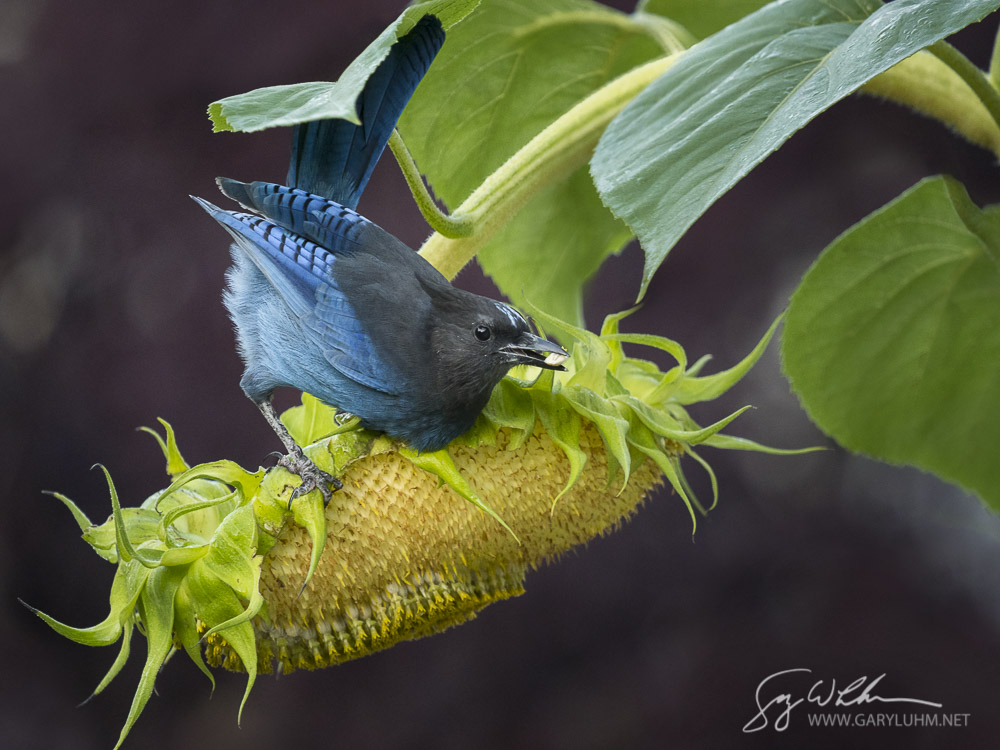
Steller’s Jay Sunflowers
Kate also planted sunflowers, which produced seed heads that the Jay’s claimed, also in September. One visitor was a yard first Scrub Jay. Then for many consecutive mornings, several Steller’s came by, taking turns at one or another of six sunflowers. This particular images became my favorite of many, I think because I moved with my feet to create a purple-plum background, accenting the yellow seed head, and also the wren-like look the Jay displayed as it collected a seed.
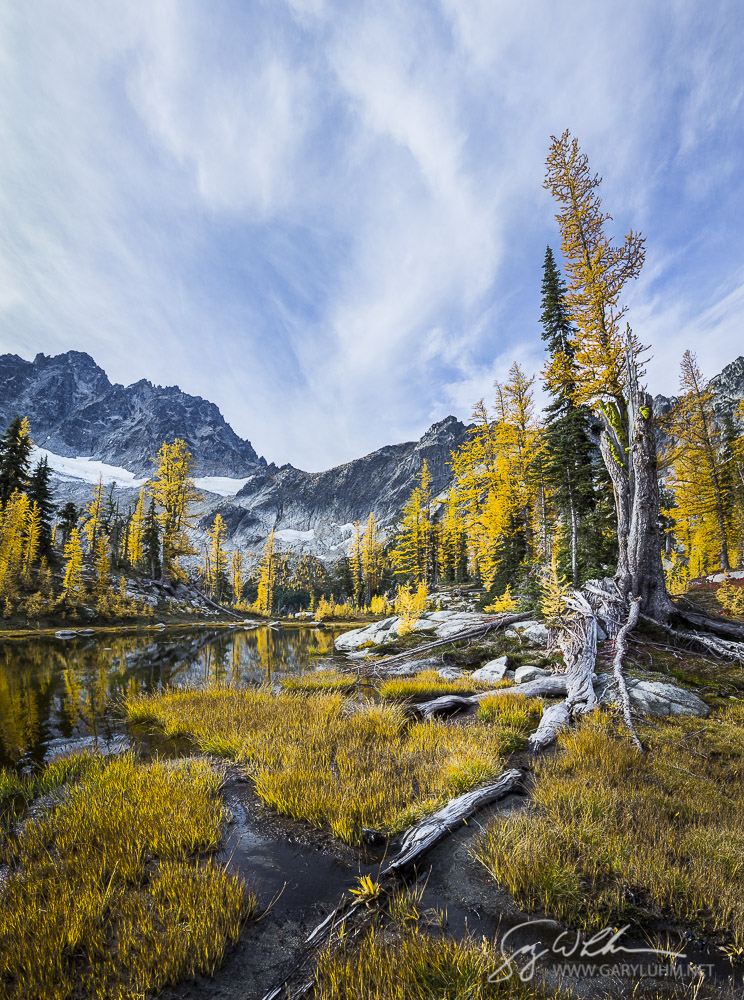
Horseshoe Lake Corona Hurrah
In August, I abandoned ideas of backpacking (knee issues, not coronavirus), and instead worked at exterior house painting and blog posts. One of the blogs was about our 2014 Horseshoe Lake trip: “Horseshoe Lake”. While examining images, I discovered the un-developed vertical panorama, which I declared a 2020 favorite. I love the complimentary colors, the leading line of the fallen tree up into the orange larch in the sky, and the curvy cloud that parallels the larch. Mt. Stuart looms at the far left.
I did more research, less travel, much less Facebook, in 2020. We now have solar panels, new windows and an expanded garden. More transitions to come in 2021.
Comments appreciated,
Stay safe,
Gary
AMAZING! Thanks for sharing. 2020 was very productive for you regardless of its “moments.” You inspire me to kayak the slough again. Where do you put on? I usually go to the rowing club.
I also wanted to tell you – as a fellow kayaker – that I was on Yarrow Bay a month ago and flushed out a Common Loon pair along the docks (west side homes). As you probably know, an extremely easy launch across from Ivar’s on Lk Wash Blvd.
Enjoy the rest of the year and I can’t wait to see what you see this time next year!
Susan (EAS)
Susan
Thanks so much! We live now in Juanita, so our close access to the Slough is now the Kenmore boat launch, state park permit required, but, because it’s where the river empties into Lake Washington, lots of birds. The Common Mergansers are back this year in large numbers, 250 or more, makes for some challenging flight shooting when the return from fishing in the Slough.
Great picks for 2020!
Gary – What an amazing year for you and your favorites are my favorites! I think I got to see your Brown Creeper nest at Stillwater. I had taken a photo of a single Brown Creeper (I thought!) and saw a second one in post processing that must have been a juvenile. I didnt get back to see them unfortunately. I also think you have crazy kayak skills and still in awe of you going out to Smith Island. I went with a group on a larger power boat and it was not calm. All the best birding to you in 2021!
Laurie Thanks so much! If you got a little creeper feller, maybe you hit the day they fledged. I couldn’t find any of them after fledging.
Stay safe, hope all the best for you in 2021.
Gary
Gary-Amazing photography as usual. Thanks for sharing.
Gary, As they say, give a pro a Brownie and he’ll make you a Picasso. Fab as always!!
Hopefully, your circle of influence will expand in 2021.
Cheers, Andy
Gorgeous! Thanks for sharing.
A beautiful collection. Congratulations on all these great images locally!
Hi Margaret! Locally it was. Thanks so much!